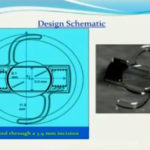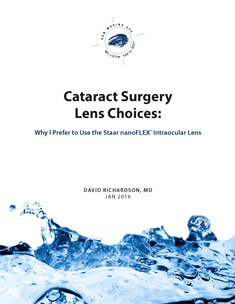In my last post I introduced the controversy concerning blue light filtering IOLs. You may be asking yourself, “If it’s good for skiers and helps with contrast sensitivity, why wouldn’t I want an IOL to block the blue rays of light?” Tomorrow I’ll address that question.
First, let’s look at the reasons touted to block the far blue spectrum of light and clarify that no one is suggesting that all blue light be blocked, only the shorter “near-ultraviolet” wavelengths of light. The main reason touted by those in favor of blocking these shorter wavelengths of blue light is the evidence that these wavelengths may increase the risk of macular degeneration.
This evidence is largely culled from population-based studies. Essentially a large number of people were observed for years and examined for the development of various diseases such as macular degeneration. Those who developed macular degeneration were compared to those who didn’t. Attributes such as nutrition, activity, and environmental exposures were evaluated. A correlation between macular degeneration and exposure to light was noted.
Additionally, there are some studies that have suggested a correlation between cataract surgery and worsening of macular degeneration. There are many reasons why this could be (inflammation, ease of detecting macular degeneration after a cataract is removed, etc.). One theory is that because most synthetic IOLs allow a greater spectrum of light into the eye than the natural cataractous lens that these rays of light may be capable of damaging the retina.
Indeed, there is laboratory evidence of “phototoxicity” when retinal cells are exposed to near-ultraviolet light. This is suggestive that a similar effect could occur in a living eye.
So, with the above evidence suggesting that a blue-blocking IOL may protect from macular degeneration and improve contrast sensitivity, why wouldn’t all surgeons be using them?
As it turns out, there are quite a few reasons not to place a blue-blocking IOL in the eye. I’ll discuss the main arguments against use of these IOLs in my next post.
© 2009 David Richardson, MD







Leave a Reply